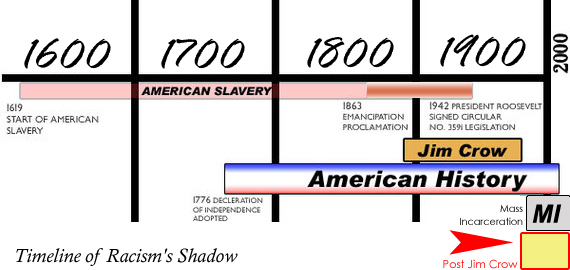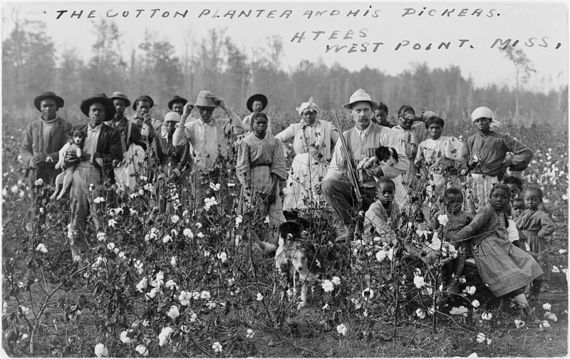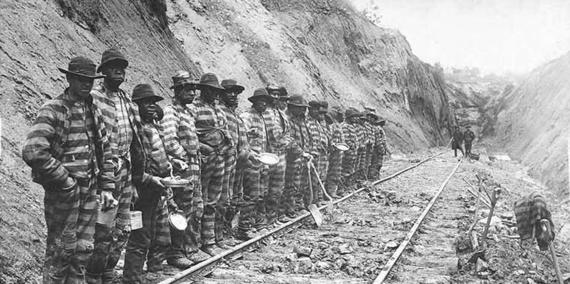In a piece recently written on Forbes.com entitled “If There Should Be Reparations For American Slavery The Amount Should Be Around About Nothing” author Tim Worstall took on the task of assessing the damages for American Slavery and attempted to discuss the reparations due for its existence. In his effort to give an economic analysis of slavery his Forbes piece incorrectly omitted black Americans lost value in culture, family, and community. Worstall also failed to account for a significant amount of history, his piece looked at the years from 1776-1860, when we know slavery and its vestiges lasted so much longer. The dismissive view presented lacked context for the institution’s real economic impact on a nation, and role in the formation of one of the wealthiest countries the world has known.
As I wrote in a prior article:
America is only 236 years old, the Independence of the country was gained in 1776. While in contrast, America’s African slavery lasted from 1619, to at least the date used by most textbooks 1862. But as can be seen in pieces such as “PBS Slavery by Another Name” ... Through the use of convict leasing and vagrancy laws America kept Blacks subjugated well into the 20th century. It is only in 1942 that government officials made slavery illegal by actually acting to enforce the rights of African American slaves to be free. President Roosevelt signed circular No. 3591 legislation on December 12, 1941, finally, effectively making slavery illegal in the United States in 1942. Paula Deen, Trayvon Martin, the Shadow of Racism and the Power of “the N-word”
The institution left an indelible shadow over America that still lasts today. While many remember slavery as a regional institution enriching a few southern slaveholders, it was in fact so much more. As cotton became a dominant export sold in the blossoming global economy, slavery was in large part the fuel that drove the newly forming American economic engine forward.
One crop, slave-grown cotton provided over half of all U.S. export earnings. By 1840, the South grew 60 percent of the world’s cotton and provided some 70 percent of the cotton consumed by the British textile industry... slavery paid for a substantial share of the capital, iron, and manufactured good that laid the basis for American economic growth... precisely because the South specialized in cotton production, the North developed a variety of businesses that provided services for the slave South, including textile factories, a meat processing industry, insurance companies, shippers, and cotton brokers. Gilder Lehrman American Institute
Because of the needs of the south, northern bankers positioned themselves as some of the primary economic beneficiaries of cotton producing plantations. Bankers on Wall Street made millions selling goods to the south, creating banks to finance southern plantations and also by exporting the picked cotton out of the country.
“When the New York City banker James Brown tallied his wealth in 1842, he had to look far below Wall Street to trace its origins. His investments in the American South exceeded $1.5 million, a quarter of which was directly bound up in the ownership of slave plantations...Brown was among the world’s most powerful dealers in raw cotton, and his family’s firm, Brown Brothers & Co., served as one of the most important sources of capital and foreign exchange to the U.S. economy.” “How Slavery Led To Modern Capitalism” Bloomberg View by Sven Beckert and Seth Rockman
The north and the south were inextricably linked as the force of cotton filled financial coffers across the nation. As a multitude of goods, from slave clothing to cotton growing tools, were shipped from northern manufacturing plants to southern plantations, northern businesses far removed physically reaped great financial reward from slavery’s existence. Contrary to popular belief, according to National Geographic “Cotton was not shipped directly to Europe from the South. Rather, it was shipped to New York and then transshipped to England and other centers of cotton manufacturing in the United States and Europe” “How Slavery Helped build a World Economy” by Howard Dodson. Cotton and the slaves that produced it inseparably linked and underpinned the entire American economy, not just one southern region of the country.
Worstall in stating “...there’s another way of calculating what reparations might or should be... However, I think we still end up in roughly the same sort of place. Which is that even if reparations for slavery are logically or morally due, the actual amount is still going to end up being pretty much nothing” inaccurately limits his calculation by simply attaching reparations to the dollar value the slaves produced, but disassociating the true value of the freshly picked cotton to a sprouting nation. Additionally he fails to properly evaluate the cost of the full damages due to slaves for their pain and suffering. America as we know it is a virtual impossibility without the transfer of wealth from blacks to the greater American economy. Worstall fails to recognize slaves themselves were a commodity, often used to secure financing for more lands, additional slaves, and tools to expand plantations. As stated by Tai-Nahisi Coates in his piece on the Atlantic.com, “In 1860, slaves as an asset were worth more than all of America’s manufacturing, all of the railroads, all of the productive capacity of the United States put together,” the Yale historian David W. Blight has noted. “Slaves were the single largest, by far, financial asset of property in the entire American economy.” The Case for Reparations
Blacks saw their free labor and bodies create mass fortunes the modern world had never seen before in steel mines for companies like U.S. Steel in Alabama during the 1920’s, on fields of cotton in the Carolinas in the 1820’s, and on tobacco fields throughout Virginia in the 1720’s. Due to the length and economics of American slavery, it serves not just as a chapter in American history, but rather it is the foundation that created this country’s global economic advantage. The fundamental reality, as so eloquently shown by Coates, is that American slavery was an institution that did not abruptly end in the late 1800’s. Rather, its lasting effects and policies continued well beyond. We see in pieces like the book “Slavery by Another Name”, and the preceding Wall Street Journal article “From Alabama’s Past, Capitalism Teamed With Racism to Create Cruel Partnership” both written by Douglas Blackmon, slavery left a lasting shadow over the entire American economy. Blackmon’s work outlines how slave labor reformed itself through the use of prison labor as steel replaced cotton in America’s production cycle. Prison labor, an alternative source of free labor which disenfranchised the same group of blacks, was born through the use of laws such as the 13th Amendment which stated “neither slavery nor involuntary servitude, except as a punishment for crime whereof the party shall have been duly convicted”. As a result the recipients of slavery’s benefits built empires that still stand today and pushed slavery’s past economic effects into modern financial realities.
Looking more closely at other historical implementations of reparations we see from Israel to Chile examples of assessing value for human atrocity. Using legal analysis, reparations involves a two-part analysis to determine an amount due: the right of the victim to be made whole and an assessing of additional damages that came as a result of the actions. Worstall in attempting to create a number that fits financially fails to commit to true economic analysis of both parts. If we look to Israel’s deal with West Germany, which according to Wikipedia came as a result of repayment for “slave labor and persecution of Jews during the Holocaust, and to compensate for Jewish property that was stolen by the Nazis” we see a model for compensation. West Germany attempted to address both components in the awarding of a multi-billion dollar sum. According to Coates “West Germany ultimately agreed to pay Israel 3.45 billion Deutsche marks, or more than $7 billion in today’s dollars. Individual reparations claims followed—for psychological trauma, for offense to Jewish honor, for halting law careers, for life insurance, for time spent in concentration camps.” As we have seen in the United States without an action of recognition of this sort you end up in a loop of extended consequences from the initial action of slavery. According to the United Nations Basic Principles and Guidelines on the Rights to a Remedy and Reparation for Gross Violations of International Human Rights, there is a 5 point guideline for reparations: 1) restitution, 2) damages, 3) rehabilitation, 4)satisfactions and 5) guarantees for a promise not to repeat. In the United States when slavery was abolished none were followed, and as a result the institution of slavery was reinvented in new forms by its profiteers who refused to relinquish the economic advantage of free labor well after the Emancipation Proclamation. As pointed out by David Ghram of the Atlantic a historical moment occurred this week when the Dallas County Commissioners Court recognized the need for reparations in commemoration of Juneteenth by stating:
Therefore, be it resolved in the Dallas County Commissioners Court that Juneteenth and its historical mimicking of freedom is just that, and that the United States of America is derelict in its promise of life, liberty and the pursuit of happiness to the African-American people. Be it further resolved that the dereliction that has caused 400 years of significant [inaudible] to millions and significant suffering to the descendants of those who have been enslaved Africans who built this country, should be satisfied with monetary and substantial reparations to same.
Slaves were forced to invest in America’s future, while they never received a true return on their investment. It was this investment which should have yielded one of the greatest rates of return in modern history, far more than 1% compounded as suggested by Worstall. The extension and repetition of the institution as a direct result of vagrancy laws and continued slave-like practices throughout the south during the early 20th century resulted in massive profits for companies such as US Steel. Which is still one of thelargest steel companies in the country today. While we can look at individuals and companies that did not exist, or were not present in America at the time of slavery and question why they should be forced to pay reparations, that analysis incorrectly frames reparations true role. A role that includes repairing a nation and repairing enslavement’s long-term effects on a people. It also fails to look at the reality that many of these new businesses from biotech to medical research companies secured start up financing from financial institutions that grew exponentially as a direct result of slavery. While records are sparse due to lack of access, there has been public recognition of this point and apologies by the predecessors of mega-banks such as Wells Fargo for their direct ties to slavery.
Historians at the History Factory, a research firm specializing in corporate archival work, found that the Georgia Railroad and Banking Company and the Bank of Charleston — institutions that ultimately became part of Wachovia through acquisitions — owned slaves, Wachovia said in the statement. Records revealed that the Georgia Railroad and Banking Company owned at least 162 slaves, Wachovia said, and that the Bank of Charleston accepted at least 529 slaves as collateral on mortgaged properties or loans. The Bank of Charleston also acquired an undetermined number of people when customers defaulted on their loans. “We know that we cannot change the past, and we can’t make up for the wrongs of slavery,” said Thompson. “But we can learn from our past, and begin a stronger dialogue about slavery and the experience of African-Americans in our country.” “We want to promote a better understanding of the African-American experience, including the unique struggles, triumphs and contributions of African-Americans, and their important role in America’s past and present,” “Wachovia apologizes for slavery ties” CNN.com
So when a biotech company gets a multiple-million dollar credit line from Wells Fargo today while attenuated, the reality of a connection to the nation’s dark financial past still exists. While we can demand policy that directly ties economic access to this lineage of slavery through innovative ideas such as free state college education for descendants of slaves a program that would allow them not to start life in debt, or a discussion of making the first $200,000 earned by a descendant of a slave nontaxable thus incentivizing a participation in the marketplace. We need to do much more to get a handle on the remnants of slavery’s legacy. Therefore, instead of assessing the value of American slavery and the years that followed against arbitrary dollar figures as we saw on forbes.com, the proper analysis is to look more closely at America’s foundation with a thorough review, and then create policies that acknowledge the historical wrongs. To correctly determine an amount for reparations, we need to get a full & accurate view of damages. This can only be done by performing in-depth research such as that put forth in bill H.R. 40 by U.S. Congressman John Conyer. It is only by facing the true damage done that we can move toward repair and out of the shadow of our great nation’s unresolved past.
Bringing the gifts that my ancestors gave, I am the dream and the hope of the slave. I rise.
— Maya Angelou






No comments:
Post a Comment